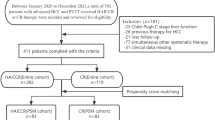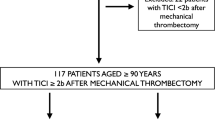Abstract
Introduction
Cancer-associated thrombosis (CAT) is a significant concern among patients with malignant diseases, leading to increased mortality. While current guidelines recommend primary thromboprophylaxis for venous thromboembolism (VTE) in medium-to-high-risk outpatients, this practice remains controversial. A better understanding of primary thromboprophylaxis is crucial, yet there is a lack of Real-World Evidence (RWE) in Portugal.
Aims
This RWE study aimed to elucidate primary thromboprophylaxis practices among cancer outpatients in Portugal.
Methods
A five-year observational multicentric study in eight Portuguese health institutions enrolled 124 adult cancer outpatients under primary thromboprophylaxis for VTE. The endpoints were CAT, bleeding, cancer progression and death.
Results
High thrombotic risk tumours were prevalent, with 57% (71) of the patients presenting with pancreatic and gastric cancers. Regarding primary thromboprophylaxis, 55% (68) received Low-Molecular-Weight Heparin (LMWH). VTE was presented in 11% (14) of the patients and major bleeding in 2% (2). Vascular compression, elevated D-dimer and previous VTE were significantly associated with VTE occurrence under primary thromboprophylaxis. The Onkotev model was shown to be the best risk assessment model (RAM) in this population (p = 0.007). CAT patients exhibited a lower progression-free survival than non-CAT patients (p = 0.021), while thrombosis did not influence overall survival (p = 0.542).
Conclusion
Primary thromboprophylaxis in medium-to-high-risk cancer outpatients is a safe and effective practice in real-world settings. This study is the first Portuguese RWE on primary thromboprophylaxis, highlighting evidence for improving prophylactic strategies in this population.
Graphical abstract




Similar content being viewed by others
Data availability
The data presented in this study are available on request from the corresponding author.
References
Soff G (2019) Thrombosis and hemostasis in cancer. Scope of the problem and overview. Cancer Treat Res 179:1–9
Khorana AA et al (2022) Cancer-associated venous thromboembolism. Nat Rev Dis Primers 8(1):1–18
Khorana AA et al (2021) Healthcare costs of patients with cancer stratified by Khorana score risk levels. J Med Econ 24(1):866–873
Karamouzis MV et al (2021) The impact of thromboprophylaxis on the survival of patients with advanced pancreatic cancer. The pancreatic cancer and tinzaparin (PaCT) study. Cancers 13(12):2884
Khorana AA (2010) Venous thromboembolism and prognosis in cancer. Thromb Res 125(6):490–493
Apenteng PN et al (2016) Patients’ perceptions and experiences of the prevention of hospital-acquired thrombosis: a qualitative study. BMJ Open 6(12):e013839
Falanga A, Marchetti M (2023) Cancer-associated thrombosis: enhanced awareness and pathophysiologic complexity. J Thromb Haemost 21(6):1397–1408
Khorana AA et al (2008) Development and validation of a predictive model for chemotherapy-associated thrombosis. Blood J Am Soc Hematol 111(10):4902–4907
Yan A-R et al (2021) Risk factors and prediction models for venous thromboembolism in ambulatory patients with lung cancer. Healthcare 9(6):778
Khorana AA et al (2008) Development and validation of a predictive model for chemotherapy-associated thrombosis. Blood 111(10):4902–4907
Cella CA et al (2017) Preventing venous thromboembolism in ambulatory cancer patients: the ONKOTEV study. Oncologist 22(5):601–608
Verso M et al (2012) A modified Khorana risk assessment score for venous thromboembolism in cancer patients receiving chemotherapy: the Protecht score. Intern Emerg Med 7(3):291–292
Pelzer U et al (2015) Efficacy of prophylactic low-molecular weight heparin for ambulatory patients with advanced pancreatic cancer: outcomes from the CONKO-004 trial. J Clin Oncol 33(18):2028–2034
Moik F et al (2021) Risk assessment models of cancer-associated thrombosis-potentials and perspectives. Thrombosis Update 5:100075
Godinho J et al (2020) ONKOTEV score as a predictive tool for thromboembolic events in pancreatic cancer-a retrospective analysis. Oncologist 25(2):e284–e290
Stashenko G et al (2011) Prophylaxis for venous thromboembolism: guidelines translated for the clinician. J Thromb Thrombolysis 31(1):122–132
Munoz Martin AJ et al (2020) SEOM clinical guideline of venous thromboembolism (VTE) and cancer (2019). Clin Transl Oncol 22(2):171–186
Key NS et al (2020) Venous thromboembolism prophylaxis and treatment in patients with cancer: ASCO clinical practice guideline update. J Clin Oncol 38(5):496–520
Carrier M et al (2019) Apixaban to prevent venous thromboembolism in patients with cancer. N Engl J Med 380(8):711–719
Khorana AA et al (2019) Rivaroxaban for thromboprophylaxis in high-risk ambulatory patients with cancer. N Engl J Med 380(8):720–728
Agnelli G (2019) Direct oral anticoagulants for thromboprophylaxis in ambulatory patients with cancer. N Engl J Med 380(8):781–783
Mandalà M et al (2011) Management of venous thromboembolism (VTE) in cancer patients: ESMO Clinical Practice Guidelines. Ann Oncol 22 Suppl 6:vi85-92
Xynogalos S et al (2022) Can thromboprophylaxis build a link for cancer patients undergoing surgical and/or chemotherapy treatment? The MeTHOS cohort study. Support Care Cancer 30(8):6973–6984
Moik F, Pabinger I, Ay C (2020) How I treat cancer-associated thrombosis. ESMO Open 5(1):e000610
Streiff MB et al (2021) Cancer-associated venous thromboembolic disease, version 2.2021, NCCN clinical practice guidelines in oncology. J Natl Compr Canc Netw 19(10):1181–1201
Christopoulou A et al (2022) Prophylaxis of cancer‑associated venous thromboembolism with low‑molecular‑weight heparin‑tinzaparin: real world evidence. Oncol Lett 23(4):115
Maraveyas A et al (2012) Gemcitabine versus gemcitabine plus dalteparin thromboprophylaxis in pancreatic cancer. Eur J Cancer 48(9):1283–1292
Schulman S, Kearon C (2005) Definition of major bleeding in clinical investigations of antihemostatic medicinal products in non-surgical patients. J Thromb Haemost 3(4):692–694
Eisenhauer EA et al (2009) New response evaluation criteria in solid tumours: revised RECIST guideline (version 1.1). Eur J Cancer 45(2):228–47
Cella CA et al (2023) Comparison of Khorana vs. Onkotev predictive score to individualize anticoagulant prophylaxis in ambulatory patients with cancer. Blood 142:661
Lyman GH, Kuderer NM (2020) Clinical practice guidelines for the treatment and prevention of cancer-associated thrombosis. Thromb Res 191:S79–S84
Pachón V et al (2018) Cancer-associated thrombosis: beyond clinical practice guidelines—A multidisciplinary (SEMI–SEOM–SETH) expert consensus. TH Open 02(04):e373–e386
Acknowledgements
The authors would like to thank GESCAT, Hospital Center of Trás-os-Montes e Alto Douro, Health Local Unit of Nordeste, Hospital Center of Barreiro Montijo, Hospital Center of Lisboa Ocidental, Hospital of Luz Setúbal, Hospital of Espírito Santo de Évora, Hospital Center of Vila Nova de Gaia / Espinho, University Hospital Center of São João and Fundação para Ciência e Tecnologia (FCT).
Funding
Scholarship program “Trombose & Cancro 2018: Advancing the knowledge of Cancer Associated Thrombosis” supported by GESCAT – Study Group of Cancer Associated Thrombosis, the fund holder being J.-L.P. V.T. is a PhD scholarship holder (2020.08969.BD; https://doi.org/10.54499/2020.08969.BD) supported by Fundação para a Ciência e Tecnologia (FCT), co-financed by European Social Funds (FSE) and national funds of MCTES.
Author information
Authors and Affiliations
Contributions
Conceptualization, J.-L.P.; Methodology: J.L.P., J.G., M.B., J.R., M.M., H.G. and J.R. Writing—original draft preparation: J.-L.P. and V.T. Writing—review and editing: J.-L.P., V.T., C.G., R.G., M.S. and A.A.K; Funding acquisition: J.L.P. Supervision: M.B., A.A.K and R.M. All authors have read and agreed to the published version of the manuscript.
Corresponding author
Ethics declarations
Research involving human participants and/or animals
The study was approved by the ethics committee of Hospital Center of Trás-os-Montes and Alto Douro (CES. 489/2018, 20th December 2018).
Informed consent
Patients signed an informed written consent according to the principles of the Helsinki Declaration.
Conflicts of interest
J.-L.P. received funding from LEO Pharma to conduct this investigation. The funder had no role in the collection, analysis, and interpretation of data, writing of the manuscript, or in the decision to submit the paper for publication. The remaining authors declare no conflicts of interest.
Additional information
Publisher's Note
Springer Nature remains neutral with regard to jurisdictional claims in published maps and institutional affiliations.
Bullet Points
1. Thrombosis contributes to elevated morbidity and mortality rates among cancer patients;.
2. Despite the importance of primary thromboprophylaxis, there is a lack of Real-World Evidence;.
3. This five-year observational multicentric study elucidated the practices of primary thromboprophylaxis in Portugal;.
4. Vascular compression, elevated D-dimer and a history of previous VTE were significantly associated with VTE occurrence under primary thromboprophylaxis;.
5. New insights could help refine the guidelines for primary thromboprophylaxis, improving the clinical outcomes of cancer patients.
Rights and permissions
Springer Nature or its licensor (e.g. a society or other partner) holds exclusive rights to this article under a publishing agreement with the author(s) or other rightsholder(s); author self-archiving of the accepted manuscript version of this article is solely governed by the terms of such publishing agreement and applicable law.
About this article
Cite this article
Liz-Pimenta, J., Tavares, V., Gramaça, J. et al. Primary thromboprophylaxis in cancer outpatients – real-world evidence. J Thromb Thrombolysis (2024). https://doi.org/10.1007/s11239-024-02984-1
Accepted:
Published:
DOI: https://doi.org/10.1007/s11239-024-02984-1




